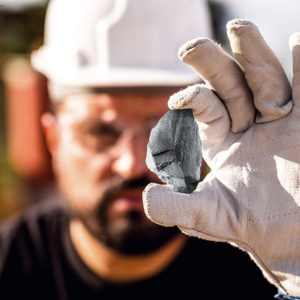It may be surprising to hear tax guidance — of all things— could have enormous implications for national security and the competitiveness of the U.S. industrial base. Yet, that’s precisely what’s at stake with a critically important tax credit tucked into the Inflation Reduction Act.
How the Treasury Department and the Internal Revenue Service interpret the 45X advanced manufacturing tax credit could make or break an effort to reshore mineral production and address our alarming overreliance on overseas mineral supply chains, particularly those dominated by China.
In proposed guidance late last year, the IRS said critical minerals extraction activities and certain processing costs would be excluded from eligibility for the credit. It was a stunning proposal that ignores congressional intent and doesn’t make any sense.
The stakes are enormous. When Congress came together to pass the Inflation Reduction Act, legislators carefully and intentionally worked to address our mineral supply chain problem with an eye toward ramping up domestic mining. Lawmakers recognized that we are beholden to China, Russia, the Democratic Republic of the Congo and other countries for vast percentages of the minerals U.S. manufacturing and automakers need.
Of the 50 critical mineral commodities the U.S. Geological Survey lists as essential for U.S. economic and national security, China is the top producer or top supplier for 30.
Our minerals vulnerability — often called the nation’s Achilles’ heel — is now a source of alarming strength and geopolitical leverage for our rivals.
In just the last 12 months, China has continuously threatened critical mineral supply chains with export controls or flooded the marketplace for metals —intentionally forcing U.S. suppliers to pause mine development or shutter.
John Podesta, the White House’s lead energy and climate adviser, recently said, “China has too much of a chokehold on critical minerals.” And President Biden’s national security adviser, Jake Sullivan, warned that mineral supply chains are “at risk of being weaponized in the same way as oil in the 1970s, or natural gas in Europe in 2022.”
The danger is obvious. And Congress, for its part, has worked to address it. But if an interpretation of the 45X tax credit goes sideways, a critical lever to bring these supply chains home will disappear.
U.S. mineral producers and processors have warned that without this incentive, proposed domestic projects will have to be canceled — the economics just won’t work.
There should be no confusion about how the guidance should be interpreted. The senators who played a crucial role in shaping the law in 2022 recently sent a letter to Treasury Secretary Janet Yellen urging a fix to the interpretation.
Those senators wrote, “The clear purpose of section 45X was to encourage investment in the United States and to build a reliable and resilient domestic supply chain for critical minerals right here at home.” They added, “We want to clarify that the blanket exclusion of materials costs is not consistent with the intent of Congress and should be expeditiously revised.”
It doesn’t get any clearer than that. The 45X tax credit is a golden opportunity to address our alarming mineral import reliance and begin the vital work of building these critical supply chains at home. But that work can’t start — or may never — unless we get this tax guidance right.
The Inflation Reduction Act and the 45X tax credit were no cure-all to the nation’s mineral vulnerabilities, but they were an essential step in the right direction. It’s now critical that Treasury and the IRS let us take it.


